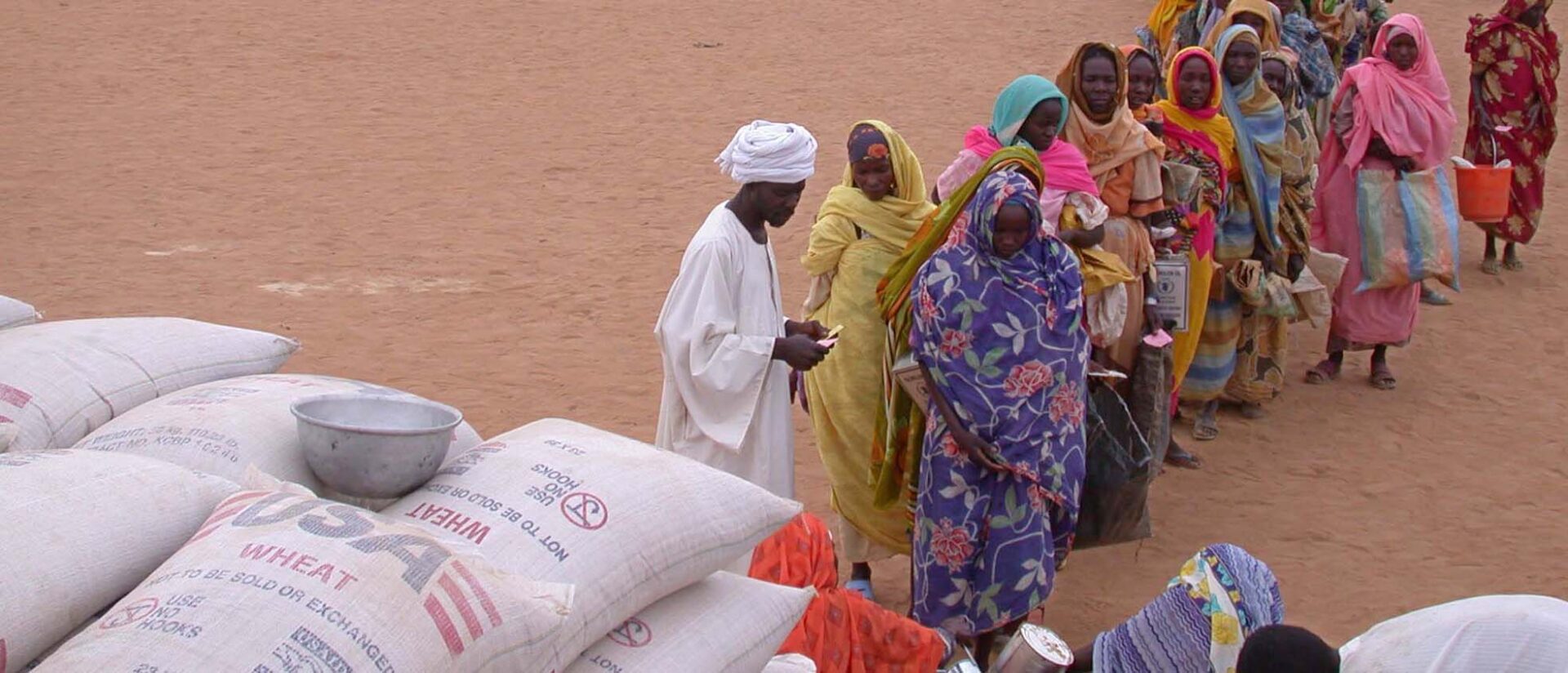 Sixteen countries have alarming levels of hunger, with Burundi the worst affected, according to an annual index released on Monday.
Sixteen countries have alarming levels of hunger, with Burundi the worst affected, according to an annual index released on Monday.
Sixteen countries have alarming levels of hunger, with Burundi the worst affected, according to an annual index.
The index also reveals that 2 billion people worldwide suffer from “hidden hunger”.

Hidden hunger, which is a lack of vitamins and minerals, weakens the immune system, stunts physical and intellectual growth, and can lead to death.
Burundi, which tops the Global Hunger Index for the third year in a row, is followed by Eritrea, East Timor and Comoros.
Some 805 million people around the world are still chronically undernourished, according to the report, despite progress in combating hunger – three years ago, the index recorded 26 countries with “alarming” or “extremely alarming” hunger levels.
South Asia and Sub-Saharan Africa face the highest levels of hunger.
Countries showing the largest improvement since 1990 include Angola, Bangladesh, Cambodia, Chad, Ghana, Malawi, Niger, Rwanda, Thailand and Vietnam.
The report said hidden hunger not only affects the well-being of individuals, but also has economic impacts, including lost productivity, persistent poverty, and reduced gross domestic product in many developing countries.
“Particularly in countries facing a high burden of malnutrition, hidden hunger goes hand in hand with other forms of malnutrition and cannot be addressed in isolation,” said Bärbel Dieckmann, president of German aid agency Welthungerhilfe.
“In the long-term, people cannot break out of the vicious cycle of poverty and malnutrition without being granted the basic right to nutritious food,” he said in a statement.
The index, now in its ninth year, combines three indicators – the proportion of the population that is undernourished, the proportion of young children who are underweight and the mortality rate for under-fives.
Among its recommendations, the report calls for an increase in numbers of nutrition and health experts, improved access to local markets and the development of local food processing facilities.
The report, compiled by the International Food Policy Research Institute, Welthungerhilfe, and Concern Worldwide is released ahead of World Food Day on October 16.
It comes a week after the Food and Agriculture Organisation announced world food prices had hit a four-year low following a record high forecast for global wheat production in 2014.
FRENCH VERSION

Seize pays ont des niveaux alarmants de la faim, avec le Burundi le plus touchés, selon un indice annuel publié lundi.
Seize pays ont des niveaux alarmants de la faim, avec le Burundi le plus touchés, selon un indice annuel.
L’indice révèle également que 2 milliards de personnes dans le monde souffrent de «faim cachée».
Faim cachée, qui est un manque de vitamines et de minéraux, affaiblit le système immunitaire, retarde la croissance physique et intellectuelle, et peut conduire à la mort.
Burundi, qui arrive en tête de Global Hunger Index pour la troisième année consécutive, est suivie par l’Érythrée, le Timor oriental et les Comores.

Quelques 805 millions de personnes dans le monde sont encore sous-alimentation chronique, selon le rapport, malgré les progrès réalisés dans la lutte contre la faim – il ya trois ans, l’indice a enregistré 26 pays avec des niveaux de faim “alarmants» ou «extrêmement alarmants”.
Asie du Sud et en Afrique subsaharienne, les niveaux les plus élevés de la faim.
Les pays enregistrant la plus forte progression depuis 1990 sont l’Angola, le Bangladesh, le Cambodge, le Tchad, le Ghana, le Malawi, le Niger, le Rwanda, la Thaïlande et le Vietnam.
Le rapport indique que la faim cachée affecte non seulement le bien-être des individus, mais aussi a des impacts économiques, y compris la perte de productivité, la pauvreté persistante, et réduit le produit intérieur brut dans de nombreux pays en développement.
“En particulier dans les pays confrontés à une forte charge de la malnutrition, la faim cachée va de pair avec d’autres formes de malnutrition et ne peut pas être traitée de façon isolée», a déclaré Bärbel Dieckmann, président de l’agence d’aide allemande Welthungerhilfe.
«À long terme, les gens ne peuvent pas sortir du cercle vicieux de la pauvreté et de la malnutrition sans avoir obtenu le droit fondamental à une alimentation nutritive,” at-il déclaré dans un communiqué.
L’indice en est à sa neuvième année, combine trois indicateurs – la proportion de la population sous-alimentée, la proportion de jeunes enfants souffrant d’insuffisance pondérale et le taux de mortalité des moins de cinq ans.
Parmi ses recommandations, le rapport appelle à une augmentation du nombre de spécialistes de la nutrition et de santé, l’amélioration de l’accès aux marchés locaux et le développement des installations de transformation des aliments locaux.
Le rapport, compilé par l’Institut international de recherche sur les politiques alimentaire, Welthungerhilfe et Concern Worldwide est publié avant la Journée mondiale de l’alimentation le 16 Octobre.
Il intervient une semaine après l’Organisation pour l’alimentation et l’agriculture a annoncé des prix alimentaires mondiaux ont atteint un creux de quatre ans après un record prévisions concernant la production mondiale de blé en 2014.


